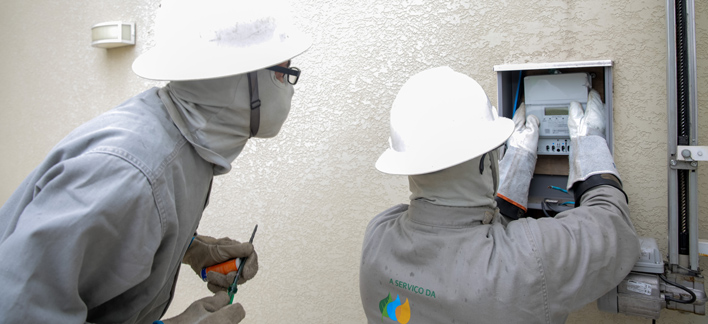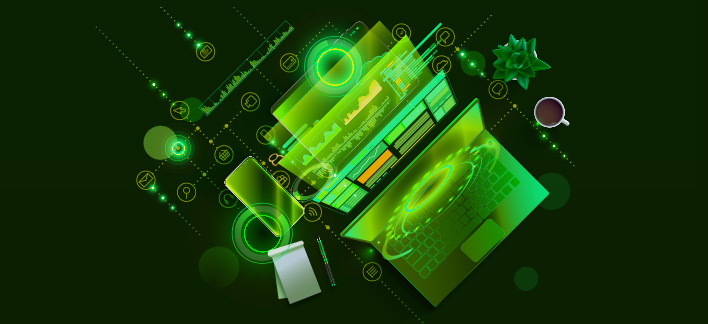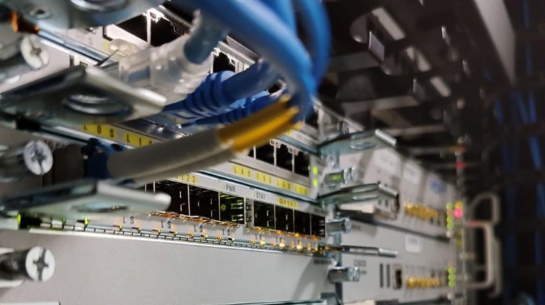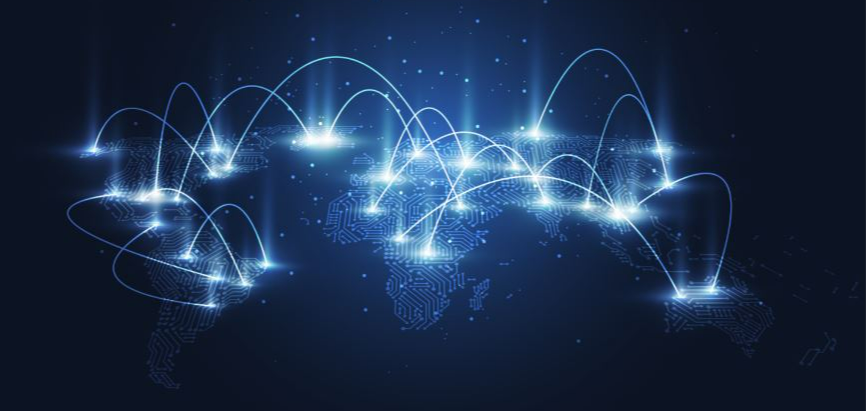Smart Grids
Smart Grid: entenda o que são e como funcionam as redes inteligentes
A produção e consumo da eletricidade mais sustentável e de qualidade é um tema muito abordado pelo mundo. Seja por meio do uso individual, em residências, até na composição de cidades utilizando cada vez mais inovação digital, o termo “Smart Grid” ou “Redes Inteligentes”, vem ganhando destaque.
O que é Smart Grid ou Redes Elétricas Inteligentes?


As Smarts Grids, ou Redes Inteligentes, são redes elétricas que podem integrar de forma inteligente e dinâmica as ações de todos os usuários conectados a elas — aqueles que geram energia, aqueles que a consomem ou aqueles que fazem ambas as coisas — a fim de fornecer eletricidade de forma eficiente, sustentável, econômica e segura.
O consumo de energia elétrica aumentou bastante nos últimos anos, chegando ao maior nível médio em 2023 (3,7% a mais, na comparação com o ano anterior), segundo dados da Câmara de Comercialização de Energia Elétrica (CCEE). Com esse crescente progresso, há uma mudança nos modelos de consumo elétrico, que passam a exigir redes de distribuição mais modernas e complexas. Bidirecionalidade, flexibilidade, digitalização e automatização são algumas das características das Smart Grids que conseguem responder melhor as novas necessidades de usuários e produtores de energia.
Por viabilizarem a utilização em larga escala de energias renováveis, as Redes Inteligente são um pilar fundamental para a transição energética.
Exemplos de Redes Inteligentes no Brasil
A Neoenergia investe em redes inteligentes a fim de gerar constante inovação e cada vez mais qualidade na distribuição de energia aos quase 17 milhões de clientes da companhia. Dentre os principais projetos da companhia no país, se destacam:
Medição Inteligente em Fernando de Noronha (PE): A Neoenergia é responsável pela modernização da medição inteligente no arquipélago de Fernando de Noronha. Em janeiro de 2023, a empresa substituiu mais de mil medidores homologados com funcionalidades mais amplas que permitem atender solicitações remotamente. O processo incluiu ainda a manutenção do sistema de telecomunicação na região, com equipamentos projetados especialmente para uma gestão precisa das redes elétricas. A iniciativa também integra o projeto Energia do Futuro.
Projeto Energia do Futuro em Atibaia (SP): Desde 2020, a Neoenergia opera uma rede privada 4G/LTE que atende toda a região de Atibaia, em São Paulo. Trata-se de um projeto pioneiro de digitalização da rede elétrica e da operação da companhia, com mais de 78 mil medidores inteligentes e esquema completo de automação da rede com Self-Healing em operação.
Sistema de restabelecimento de energia automático no Norte, Nordeste, Centro-oeste e Sudeste do Brasil: A Neoenergia trabalha com uma solução chamada Self Healing, que restabelece o fornecimento de energia de forma automática. Essa é uma das principais iniciativas de Smart Grids adotadas nos mais de 4 mil equipamentos envolvidos em algum esquema de recomposição automática ao longo da rede dos municípios dos estados de São Paulo, Bahia, Pernambuco, Rio Grande do Norte, Mato Grosso do Sul e Distrito Federal.

Como funciona uma Smart Grid
O sistema de uma Smart Grid funciona por meio de sensores que coletam e transmitem dados, podendo ajustar assim, o fluxo de eletricidade de forma automática, de acordo com a necessidade de toda a cadeia envolvida. Os controladores recebem as informações em tempo real e podem rapidamente agir para solucionar ou melhorar qualquer questão, de forma automatizada, sem a necessidade de intervenção humana.
Essa série de automações e tecnologias das Redes Inteligentes têm como objetivo principal oferecer segurança, comodidade e sustentabilidade ao fornecimento de energia por meio de algumas características.
As principais são:
As Smart Grids possuem a capacidade bidirecional de fluxo energético, sendo uma rede que pode levar energia para dois lugares distintos. Para esse fluxo acontecer, a energia deve passar pelo smart meter, um medidor bidirecional. Isso ocorre pois os painéis solares podem produzir mais energia do que de fato será consumido. Assim, o excedente é redistribuído para outras localidades.
Os picos de consumo de energia ocorrem durante a noite, mas os horários de maior geração são na parte da manhã. Um grande diferencial das Smart Grids é o banco de energia, que possibilita o armazenamento de grandes cargas de energia por algumas horas.
O Self Healing é um sistema que identifica e corrige, em poucos segundos, possíveis falhas no fornecimento de energia, geralmente causadas por quedas de árvores, tempestades ou ações de animais. Quando uma falha é detectada, o trecho da rede é isolado e alternativas são ativadas para fazer a energia chegar ao cliente afetado por outras rotas.
Rede elétrica tradicional X Redes inteligentes
A rede elétrica tradicional é estática e unidirecional, com pouca interação com os consumidores. O seu sistema de medição de energia é eletromecânico e sua manutenção exige uma verificação do equipamento manual e local, feita por um técnico da empresa de energia. Durante séculos, esse foi o único modelo oferecido aos consumidores, mas hoje, decorrente aos avanços da tecnologia e necessidade de uma transição energética para uma economia descarbonizada, as possibilidades estão aumentando.
As redes inteligentes são bidirecionais e permitem uma maior interação e controle do consumidor final. Seu medidor é digital e a manutenção pode ser feita remotamente, por meio de sistemas integrados com os computadores das empresas fornecedoras de energia.
Quais são os benefícios da Smart Grid
Diversas são as vantagens da Smart Grid. Dentre elas, em destaque, os medidores inteligentes, que possibilita aos consumidores acompanhar de perto e em tempo real seu consumo, a flexibilidade, a confiança, acessibilidade e economia. Além disso, as Redes Inteligentes tornam a rede elétrica uma via de mão dupla, permitindo que consumidores deixem de ser meros receptores de energia e virem pequenos produtores, caso possuam geradores.
Isso sem falar na segurança e comodidade geradas pela diminuição de interrupções por problemas nas redes ocasionados por fatores externos.

Redes Inteligentes no Brasil e no Mundo: Grupo Iberdrola e Neoenergia
O grupo Iberdrola se mantém na liderança da transição energética, desenvolvendo novos negócios e modelos tecnológicos em redes de distribuição. Com a criação do Global Smart Grids Innovation Hub, pretende dobrar o número de projetos de inovação em redes inteligentes. Para tal já identificou mais de 120 projetos para desenvolvimento no valor de 130 milhões de euros e chegou a acordos com 100 parceiros tecnológicos para o desenvolvimento de soluções de digitalização de redes, integração das energias renováveis, implantação do veículo elétrico e sistemas de armazenamento de energia.
A empresa criou o Centro de Gerenciamento de Redes Inteligentes (Cegri), local que faz a gestão de todas as operações de telecomunicações e de redes inteligentes das distribuidoras da Neoenergia, além do monitoramento dos equipamentos digitais utilizados nas operações das redes de energia, tais como religadores, medidores, sensores e transformadores inteligentes. O Cegri monitora os dispositivos e coleta dados que chegam a 10 gigabytes por dia, transformando os dados em informação para contribuir na tomada de decisão.
O projeto de Smart Grids da Neoenergia foi reconhecido como um exemplo de pioneirismo em tecnologia e inovação no setor elétrico ao receber o Prêmio Whow! de Inovação 2019.
